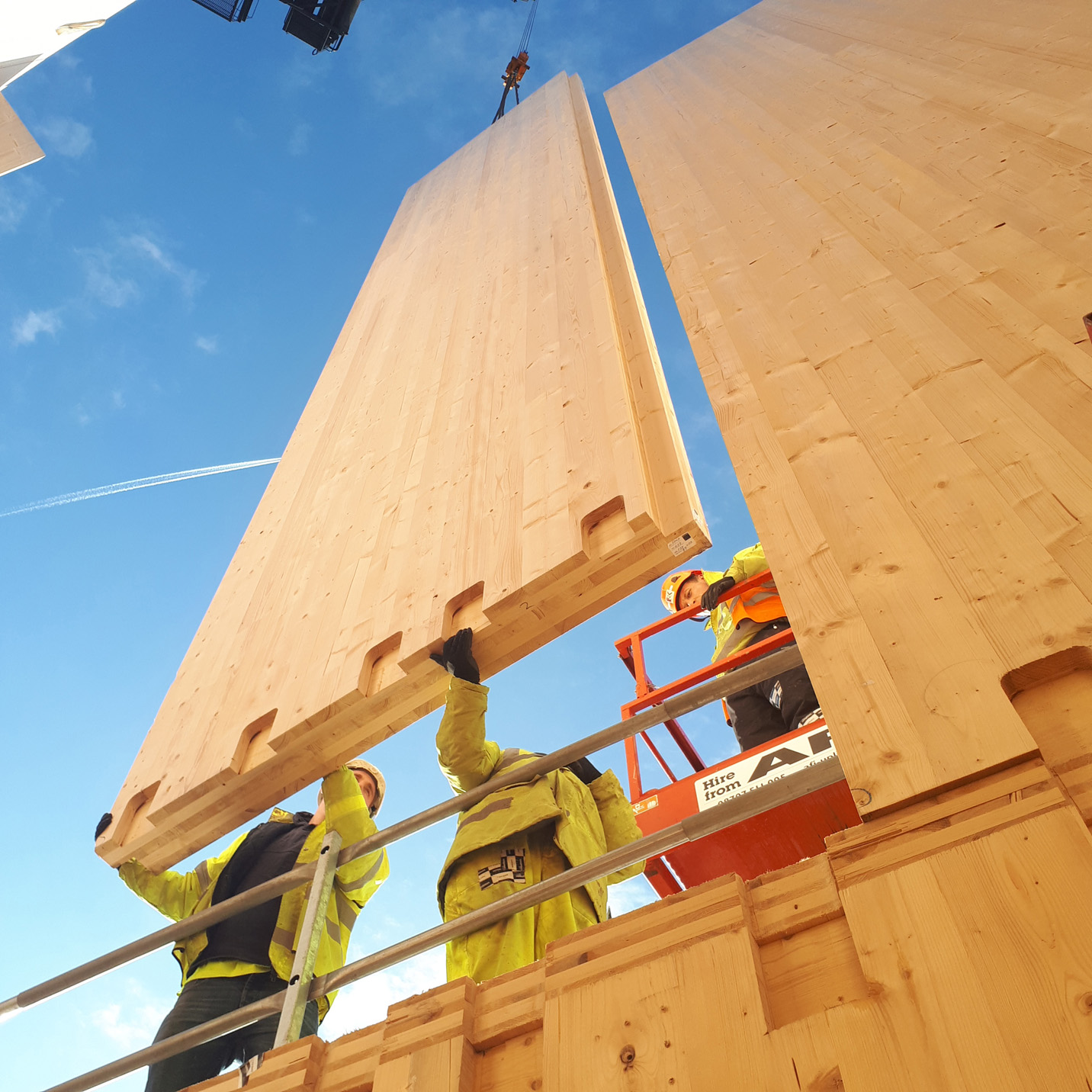
For local authorities, the climate crisis has rapidly pushed sustainability to the top of the priority list regarding new building design. As such, implementing a greater use of sustainable materials within construction is crucial. However, calculating the true carbon impact of a building is not always clear-cut, as explained here by Paul Philbin, Quality and Environmental Manager at B&K Structures.
The road to achieving Net Zero status by 2050 is rapidly growing shorter and local authorities must act soon if they are to succeed in meeting their environmental targets. As a crucial first step, local authorities should assess their current activity, considering the environmental impact caused by aspects such as transport, energy consumption and waste. However, as it accounts for as much as 40% of the UK’s total carbon output, minimising the impact of the built environment will have a fundamental part to play.
To reduce this figure, introducing more sustainable materials and practices within new construction developments is key. Despite being used successfully in many other nations, in the UK, timber usage in construction is significantly lower despite numerous examples of outstanding timber and hybrid schemes and in spite of timber’s many structural properties and sustainable benefits. For local authorities, promoting the use of greener materials will be essential in achieving the Net Zero agenda.
Equally as important to increasing the use of sustainable materials is introducing a monitoring system to track and assess the performance. This ensures that all aspects of carbon emissions are accounted for and properly recorded, allowing local authorities to consider areas in which more can be done.
Monitoring systems
The most common way to do this is by using a carbon calculator, which is used to work out the impact a new structure will have on the environment. Carbon calculators commonly base their workings on Life Cycle Analysis (LCA) and Environmental Product Declarations (EPDs).
An LCA is the measurement of how either a product or service will impact the environment throughout its life cycle. The LCA considers the resources used, operational use, and end of life destination, amongst other factors, to create a final figure. There are numerous reasons as to why LCAs are useful; in the design process changes can be introduced to a planned project to improve sustainable qualities, they can even be used for benchmarking and comparing the performance between different companies and construction materials. EPDs are built upon foundations formed by LCAs. They are independently verified and registered documents that contain completely transparent information pertaining to a product’s life-cycle environmental impact.
Although the methodology behind carbon calculators is thorough, there is such a vast number of variables to consider that it has been almost impossible to produce an accurate carbon value for a project or building. Two companies operating identically could quite easily carry out calculations and find differing results. This is because the accuracy of carbon calculators is determined by the depth of detail that is used.
Elements such as the manufacturing, transporting and sourcing of materials are commonly included within calculations, however, aspects like workers and their travel to and from site are not always considered. There are many other examples such as this that lead to inconsistency in carbon calculation.
Carbon calculators
How to overcome this issue is something being widely discussed, with several solutions having been tabled. One possible solution is to introduce a standardised carbon calculator. As there are numerous complexities and variables to consider, having a recognised format throughout the industry would produce far more accurate carbon calculation results.
Another alternative option is to assign a set carbon value to each type of product, i.e. cross laminated timber, glulam, steel, or concrete. This idea does introduce its own caveats, as the carbon value for a product will vary between specifications and manufacturers. Using sensible averages when the exact specification is not fixed, and then EPD data when a specific product is chosen, helps to overcome this issue.
For now, before an effective industry wide solution is found, using in-depth detailed figures remains the most accurate means to conduct carbon calculation. At B&K Structures we use a simple yet highly accurate carbon calculator, produced by an external consultant, (Jane Anderson at Construction LCA) to determine the environmental credentials of our projects.
The calculator draws on information sourced from published EPDs to find the carbon values assigned to each product used within a project. A number of considerations are made including the type of product, amount of product used, the transportation involved, and the amount of CO2 being stored. The insight provided by the calculator is invaluable, as it helps us to identify areas in which a project’s carbon output can be improved, and even works out the regrowth time for the trees used to make our timber products.
Understanding sequestered carbon
We are able to use our carbon calculator to understand the sequestered carbon for all our completed projects; for example, a recent local authority project with a total volume of 668.703m³ of PEFC certified Glulam and CLT resulted in 508 tonnes of sequestered carbon, and the timber was completely replaced by new growth in just two minutes and 26 seconds.
The carbon calculator also allows us to estimate the carbon footprint of projects in the early design stages, to help clients and developers make informed decisions on material use. For example, Dalston Lane — a multi-award-winning residential project in Hackney — was redeveloped from a concrete to an engineered timber scheme at an early stage, delivering a net carbon footprint of -2,600 tonnes CO2; a vast improvement on the original estimation of +2,000 tonnes when designed in concrete.
The pressure on local authorities to minimise the carbon impact of new developments will continue to increase. Whilst not yet a perfect system, using in-depth carbon calculators is the most accurate way to predict the carbon cost of new projects, allowing local authorities to consider ways to improve sustainable credentials before work even begins.








